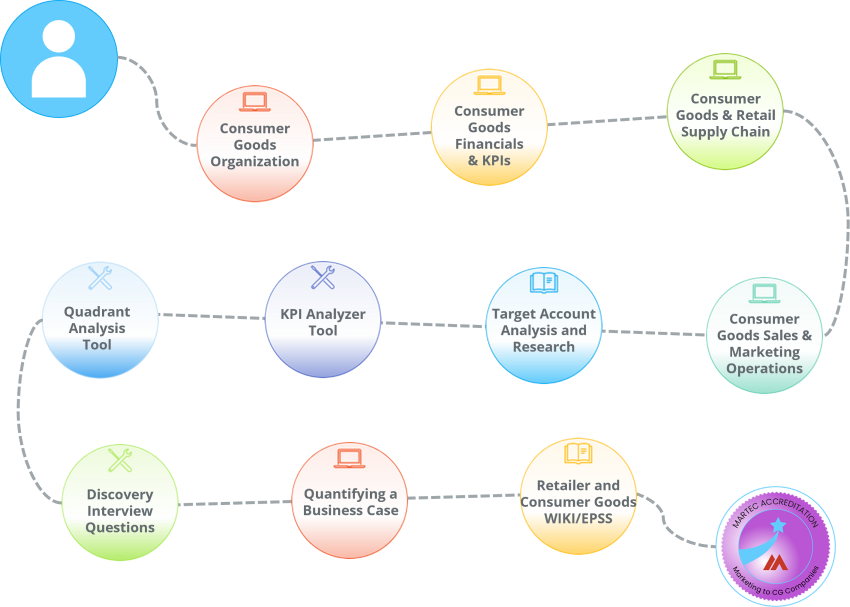Marketing to Consumer Goods Companies
Marketing to Consumer Goods Companies Learning Path
This learning path is for people involved in marketing roles where they need to produce industry specific collateral, relevant marketing campaigns, define market research, etc. This learning path builds on the Induction learning path, so marketing people should either have studied the Induction learning path before or have the equivalent knowledge from past industry experience.
Select any of the circles along the path to find out more about each step.

The Skills You Learn
By studying this learning path, consultants will gain these skills:
- Identify and articulate key trends in the Consumer Goods (CG) industry.
- Recognize the differences between segments in a common industry segmentation and its impact on day to day business processes.
- Explain the key high level processes in CG sales, marketing, trade management, supply chain management, manufacturing, direct to consumer and finance.
- Describe a typical retail CG applications architecture, identify the main platform issues and the main applications involved in a CG company’s solution portfolio.
- Analyze a CG company's financial statements to identify trends, business challenges and suspect opportunities in the account.
- Research CG organizations and identify the key senior management functions and their potential pain points.
- Explain how to perform target account analysis, identify sources of information and industry performance norms.
- Identify and prioritize solution areas their company can address.
- Identify and create a range of suitable job aids for the sales organization.
- Formulate industry specific messaging for industry marketing campaigns.
- List the quantifiable benefit areas for each solution opportunity.
- Plan a negotiating strategy with the account when the sales activities have proceeded far enough.
